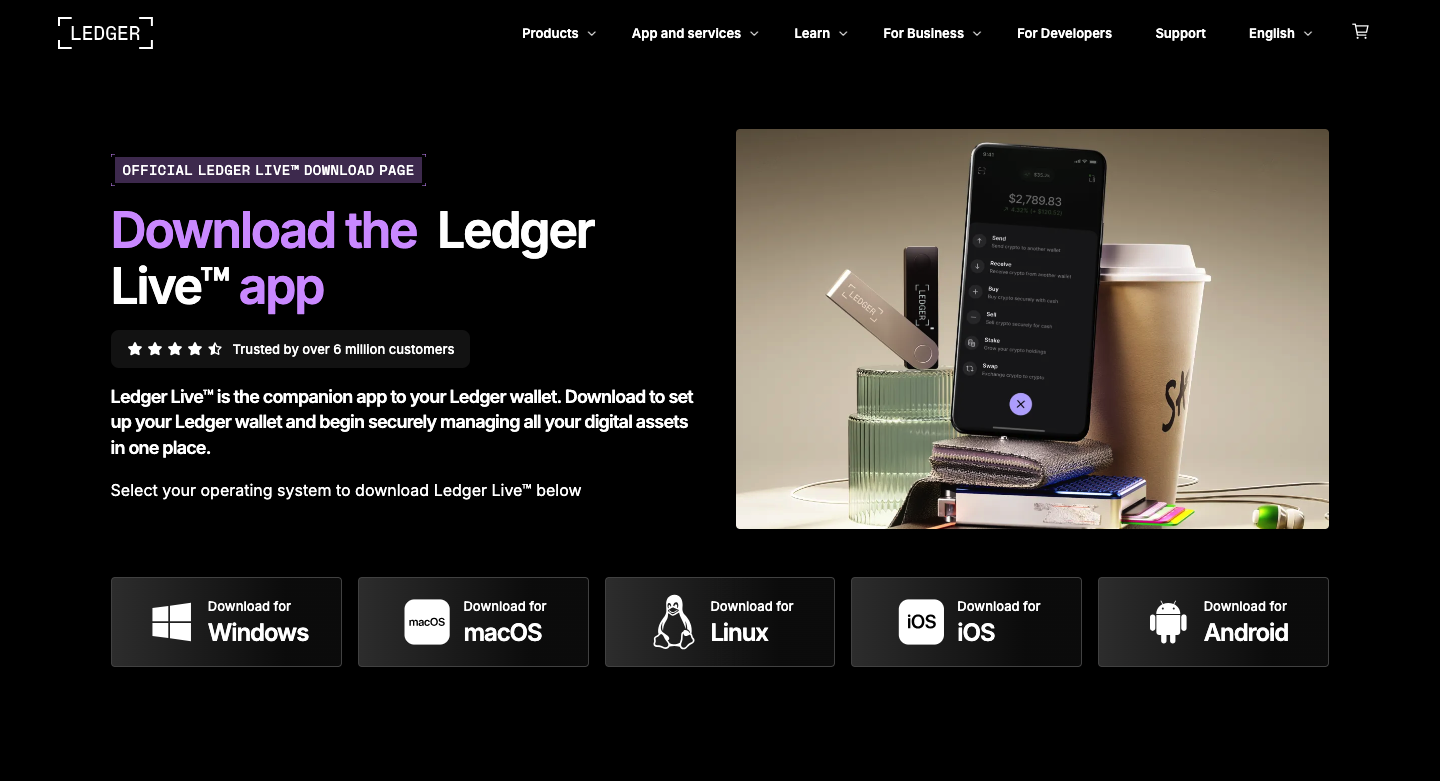
The History and Development of Ledger Live
Understanding the history and development of Ledger Live helps crypto users appreciate how this essential tool has evolved to meet the growing needs of digital asset management. From a simple wallet interface to a comprehensive platform with staking, swaps, and NFT support, the history and development of Ledger Live reflects the transformation of the entire crypto ecosystem.
Early Days: The Beginning of the History and Development of Ledger Live
In the history and development of Ledger Live, the platform began as a response to the demand for an intuitive interface to manage Ledger hardware wallets. Before Ledger Live, users had to rely on third-party apps to check balances or send transactions. This lack of cohesion highlighted the need for an official companion app, marking the earliest stage in the history and development of Ledger Live.
-
Released in 2018 by Ledger, a French company renowned for its hardware wallets
-
Provided a centralized hub for viewing crypto balances
-
Enhanced security by working directly with Ledger Nano S and Nano X devices
These early innovations in the history and development of Ledger Live helped streamline crypto management for everyday users.
Key Milestones in the History and Development of Ledger Live
Several key updates define the history and development of Ledger Live, reflecting Ledger’s commitment to usability and security. From feature rollouts to UI upgrades, each change played a role in shaping the robust application we see today.
Major milestones in the history and development of Ledger Live include:
-
2019: Integration of crypto buy/sell features through third-party partners
-
2020: Added support for staking assets like Tezos, Tron, and Polkadot
-
2021: Native NFT viewing on Ethereum
-
2022: Release of Ledger Live Mobile for iOS and Android
-
2023: Enhanced performance, portfolio analytics, and DeFi app integrations
With each version, the history and development of Ledger Live has demonstrated a clear focus on combining accessibility with strong security.
Features That Define the History and Development of Ledger Live
A closer look at current features highlights how the history and development of Ledger Live parallels the maturity of the crypto market. As user needs expanded, so did the application’s capabilities.
The history and development of Ledger Live is shaped by these key features:
-
Multi-asset support: Manage 5,000+ coins and tokens across multiple blockchains
-
Integrated services: Buy, sell, stake, and swap without leaving the app
-
NFT compatibility: View and manage Ethereum-based NFTs
-
Secure environment: Private keys remain offline in the Ledger hardware wallet
-
Portfolio tracking: Real-time analytics and performance summaries
The continued enhancement of these features showcases the history and development of Ledger Live as a response to both market trends and user feedback.
Mobile Experience in the History and Development of Ledger Live
A turning point in the history and development of Ledger Live was the launch of Ledger Live Mobile. This allowed users to manage their crypto on-the-go while maintaining security by connecting to their Ledger Nano X via Bluetooth.
With mobile access, the history and development of Ledger Live entered a new phase of flexibility:
-
Easy account management from smartphones
-
On-the-fly crypto transactions with the Ledger device
-
Access to the same features as the desktop app
This mobile functionality broadened the reach of the history and development of Ledger Live, making crypto more accessible to the growing global user base.
Community and Security in the History and Development of Ledger Live
An often overlooked aspect of the history and development of Ledger Live is the emphasis on user education and security. Ledger frequently publishes updates, alerts, and tutorials to guide users and protect them from phishing and scams.
The history and development of Ledger Live has been community-centric in these ways:
-
Regular security firmware updates
-
Bug bounty programs to detect vulnerabilities
-
Educational content, including Ledger Academy and blogs
-
Support from an active community forum
By fostering transparency and security, the history and development of Ledger Live continues to earn the trust of millions worldwide.
Challenges Faced in the History and Development of Ledger Live
Like any evolving platform, the history and development of Ledger Live hasn’t been without its hurdles. Performance lags, compatibility bugs, and criticism over closed-source elements have occasionally sparked debate within the crypto community.
Still, these challenges in the history and development of Ledger Live have led to:
-
Faster app updates
-
Better feedback loops between developers and users
-
More robust compatibility testing before feature launches
Each obstacle has ultimately strengthened the history and development of Ledger Live, reinforcing Ledger’s position as a leader in secure digital asset management.
What’s Next in the History and Development of Ledger Live?
As crypto technology grows, the history and development of Ledger Live will continue evolving to meet new demands, including more DeFi support, better NFT interoperability, and improved UX.
Looking forward, expect the history and development of Ledger Live to involve:
-
Integration with more Layer 2 networks like Arbitrum and Optimism
-
More seamless DeFi app access directly through the Live interface
-
Enhanced tax and transaction reporting tools
-
Continued localization for non-English-speaking users
The future chapters in the history and development of Ledger Live promise to bring even more functionality while upholding Ledger’s core principles of security and simplicity.
Final Thoughts on the History and Development of Ledger Live
In summary, the history and development of Ledger Live mirrors the evolution of the broader crypto landscape. What began as a simple wallet interface has grown into a full-featured command center for secure digital asset management.
By examining the history and development of Ledger Live, users gain a deeper appreciation for the innovation, community support, and security-driven decisions that shaped the app’s journey—and continue to influence its path forward.